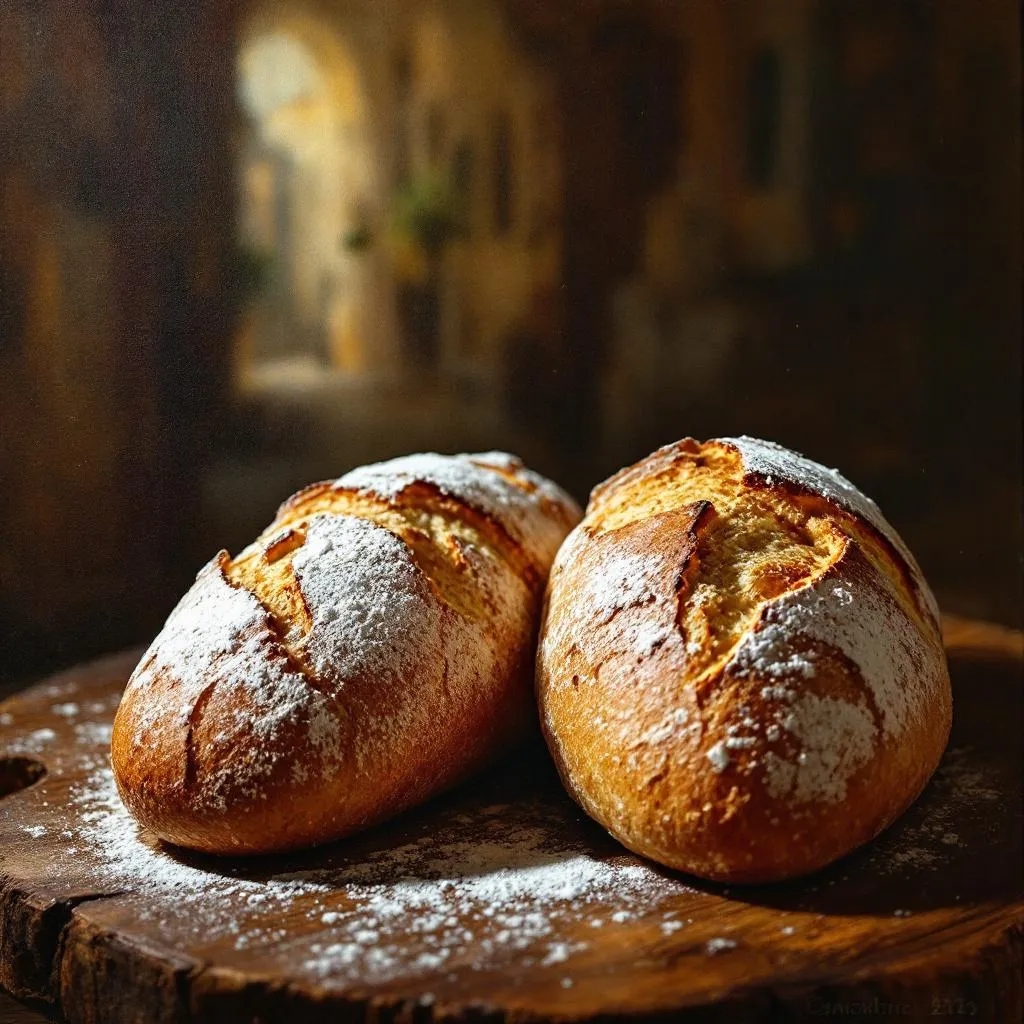Ingredients
Instructions
- Activate the yeastIn a large mixing bowl, combine warm water, sugar, and yeast. Let it sit for about 5–10 minutes, until it becomes foamy.
- Make the doughAdd salt, olive oil, and 3 cups of flour to the bowl. Mix well. Gradually add more flour (up to 3 more cups), about ½ cup at a time, until a soft dough forms.
- Knead the doughTurn the dough onto a floured surface. Knead for 8–10 minutes until smooth and elastic. Add small amounts of flour as needed to prevent sticking.
- First risePlace the dough in a lightly oiled bowl. Cover with a damp cloth or plastic wrap. Let it rise in a warm place for 1 to 1½ hours, or until doubled in size.
- Shape the loavesPunch down the dough and divide it in half. Shape each half into a loaf (oval or round). Place loaves on a parchment-lined or cornmeal-dusted baking sheet.
- Second riseCover the loaves loosely and let them rise again for about 30–45 minutes, until puffy.
- Preheat the ovenPreheat your oven to 425°F (220°C). Place a baking dish of water on the lower rack for steam (this helps create a crispy crust).Optional: Add an egg wash for a shiny, golden crust, brush the loaves with a beaten egg mixed with a tablespoon of water.
- Bake the breadBake for 25–30 minutes, or until the loaves are golden brown and sound hollow when tapped on the bottom.
- Cool before slicingLet the bread cool on a wire rack for at least 20 minutes before slicing.
Notes
Use warm water, not hot: Water around 105–110°F (40–43°C) activates yeast best. Too hot and it kills the yeast; too cold and it slows rising.
Don’t rush the rise: Letting the dough double in size is key for light, airy bread. Find a warm, draft-free spot (like inside an oven with the light on) to proof.
Knead well: Kneading develops gluten, giving your bread structure and that chewy texture. If the dough feels sticky, sprinkle a bit more flour, but avoid adding too much or your bread can turn dense.
Steam in the oven: Placing a tray of hot water on the bottom rack creates steam. This keeps the crust moist initially and helps it turn crispy and golden.
Score the loaves: Just before baking, use a sharp knife or razor blade to make shallow slashes on the top. This helps the bread expand evenly and gives that classic look.
Use bread flour if possible: Bread flour has more protein than all-purpose flour, helping create a chewier, more elastic crumb. But all-purpose works fine too.
